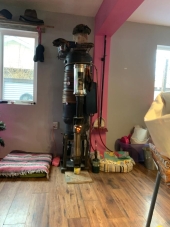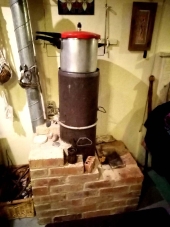








Our inability to change everything should not stop us from changing what we can.









Our inability to change everything should not stop us from changing what we can.












Robert Ray wrote:
My neighbor uses his indoor wood stove to heat up water for his radiant floor heating. I'll see if I can't get some pictures of his set up and pex manifold.
We put inan on demand water heater when we built our house to take advantage of the radiant floor heating application farther down the road.





Our inability to change everything should not stop us from changing what we can.








Amadou wrote:
That worries me about the connection, too.
The crawl space is only 12" deep so I've been slowly excavating with a cement hoe and 1 gal bucket to deepen the space for access.
I'm not sure if something extra is needed in order for the system to transition from slab to crawl space.




Amadou wrote:
Thanks for that link, Silver!
That worries me about the connection, too.
We have a combination of shallow crawl space under part of the house and a slab for larger portion. We are placing a sub floor over the slab and want to install the system at that time.
The crawl space is only 12" deep so I've been slowly excavating with a cement hoe and 1 gal bucket to deepen the space for access.
I'm not sure if something extra is needed in order for the system to transition from slab to crawl space.
Projects, plans, resources - now on the Permies.com digital marketplace.
Try the Everything Combo as a reference guide.




Erica Wisner wrote:
We're doing a poured earthen floor (I know we said we'd never pump water through earthen masonry, but warm mud would be almost an improvement in this particular situation).
It can be done!

|
Nothing? Or something? Like this tiny ad:
The new kickstarter is now live!
https://www.kickstarter.com/projects/paulwheaton/garden-cards
|





